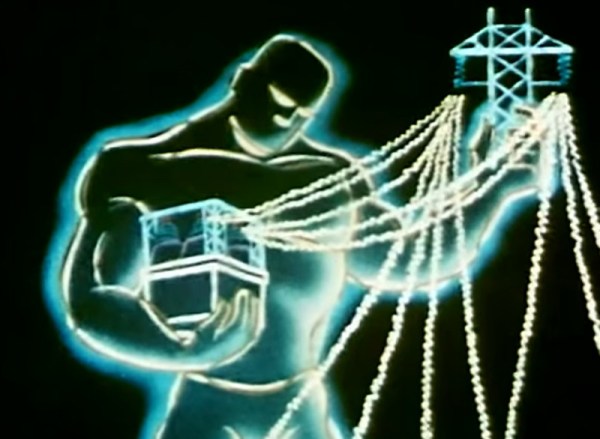This week’s film begins as abruptly as the Atomic Age itself, though it wasn’t produced by General Electric until 1952. No time is wasted in getting to the point of the thing, which is to explain the frightening force of nuclear physics clearly and simply through friendly animations.
[Dr. Atom] from the Bohr Modeling Agency describes what’s going on in his head—the elementary physics of protons, neutrons, and electrons. He explains that atoms can be categorized into families, with uranium weighing in as the heaviest element at the time. While most atoms are stable, some, like radium, are radioactive. This evidently means it stays up all night doing the Charleston and throwing off neutrons and protons in the process of jumping between atomic families. [Dr. Atom] calls this behavior natural transmutation.
Artificial transmutation became a thing in the 1930s after scientists converted nitrogen into oxygen. After a couple of celebratory beers, they decided to fire a neutron at a uranium nucleus just to see what happened. The result is known as nuclear fission. This experiment revealed more about the binding force present in nuclei and the chain reaction of atomic explosions that takes place. It seemed only natural to weaponize this technology. But under the right conditions, a reactor pile made from graphite blocks interspersed with U-235 and -238 rods is a powerful and effective source of energy. Furthermore, radioactive isotopes have advanced the fields of agriculture, industry, medicine, and biochemistry.














